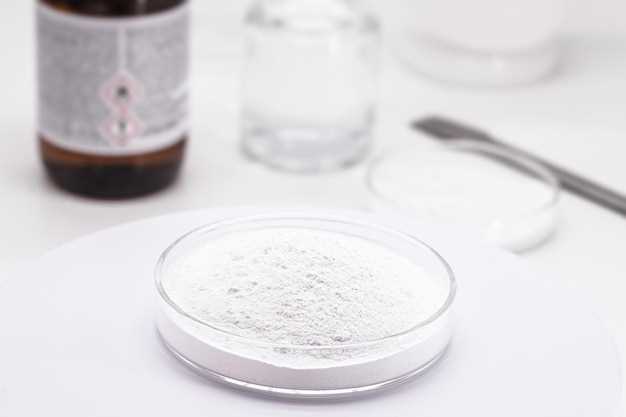
Metronidazole is a proven treatment for yeast infections that can provide fast and effective relief. If you’re struggling with the discomfort and itching of a yeast infection, metronidazole may be the solution you’ve been looking for. With its powerful antifungal properties, metronidazole can help to quickly eliminate the infection and restore balance to your body.
Don’t let a yeast infection disrupt your life any longer. Try metronidazole today and experience the relief you deserve.
Benefits of Metronidazole for Treating Yeast Infections

Yeast infections are a common condition that can cause discomfort and itching. Metronidazole is a medication that is effective in treating yeast infections by targeting the overgrowth of yeast in the body. There are several benefits to using metronidazole for yeast infections:
1. Antifungal Properties
Metronidazole has antifungal properties that help to eliminate yeast overgrowth in the body. It targets the yeast and prevents it from spreading further, helping to relieve symptoms of yeast infections.
2. Fast Relief
Metronidazole works quickly to provide relief from the symptoms of yeast infections. Many people experience relief within a few days of starting treatment, making it a popular choice for those looking for fast relief.
- Relief from itching and discomfort
- Reduction in vaginal discharge
- Improvement in overall vaginal health
Overall, metronidazole is a beneficial medication for treating yeast infections due to its antifungal properties and fast-acting relief. It is important to follow the prescribed dosage and treatment duration to ensure the best results.
Benefits
Metronidazole is a powerful antibiotic that is used to treat a variety of infections, including yeast infections. It works by destroying the harmful bacteria that cause the infection, allowing the body to heal naturally. Metronidazole is known for its high effectiveness in treating yeast infections and provides quick relief from symptoms such as itching, redness, and discharge.
One of the main benefits of metronidazole is its broad-spectrum activity, meaning it can target a wide range of bacteria and parasites. This makes it a versatile treatment option for various infections, including those caused by yeast.
Furthermore, metronidazole is available in different formulations, including oral tablets, topical creams, and gels, making it easy to use and convenient for patients. It is also generally well-tolerated, with minimal side effects reported.
Overall, the benefits of metronidazole in treating yeast infections make it a reliable and effective option for those seeking relief from this common and uncomfortable condition.
Effectiveness of Metronidazole
Metronidazole is a highly effective antibiotic that is commonly used to treat bacterial infections, including certain types of yeast infections. It works by inhibiting the growth of bacteria and other microorganisms in the body, helping to eliminate the infection.
When applied topically or taken orally, metronidazole targets the bacteria that are causing the infection, reducing inflammation and relieving symptoms. It is important to follow the prescribed dosage and instructions from your healthcare provider to ensure proper effectiveness and prevent antibiotic resistance.
Metronidazole is known for its rapid action and generally provides relief within a few days of starting treatment. However, it is essential to complete the full course of antibiotics as directed by your doctor to prevent the infection from returning or becoming resistant to treatment.
Applying Metronidazole

When using metronidazole for yeast infections, it is important to follow the instructions provided by your healthcare provider or as indicated on the medication label. Here are some general guidelines for applying metronidazole:
- Wash your hands before and after applying the medication to prevent the spread of infection.
- Clean and dry the affected area before applying metronidazole.
- Apply a thin layer of the medication to the affected area, ensuring full coverage of the infection site.
- Avoid getting the medication in your eyes, mouth, or other mucous membranes.
- Continue using metronidazole for the prescribed duration, even if symptoms improve before the treatment is complete.
- Store metronidazole in a cool, dry place, away from direct sunlight and moisture.
If you experience any adverse reactions or worsening of symptoms while using metronidazole, contact your healthcare provider immediately for further guidance.
Applying Metronidazole
When using metronidazole for treating yeast infections, it is important to follow the instructions provided by your healthcare provider or pharmacist. Here are some general guidelines for applying metronidazole:
- Wash your hands thoroughly before and after applying metronidazole.
- Clean and dry the affected area before applying the medication.
- Apply a thin layer of metronidazole cream or gel to the affected area.
- Gently massage the medication into the skin until it is absorbed.
- Avoid getting metronidazole in your eyes, nose, or mouth. If accidental contact occurs, rinse with water immediately.
- Use metronidazole as directed by your healthcare provider, even if you start to feel better before the treatment is complete.
- Do not stop using metronidazole prematurely, as this may lead to the recurrence of the infection.
It is important to follow these instructions to ensure the effectiveness of metronidazole in treating yeast infections and to minimize the risk of side effects.
Safety
When using metronidazole to treat yeast infections, it is important to follow safety precautions to minimize risks. Here are some key safety points to consider:
Consult a Doctor
Before using metronidazole, consult with a healthcare provider to ensure it is the right treatment option for your specific condition. A doctor can provide guidance on dosage, usage, and potential interactions with other medications.
Avoid Alcohol
Avoid consuming alcohol while using metronidazole, as it can cause severe adverse reactions such as nausea, vomiting, headache, and flushing. Alcohol can also reduce the effectiveness of the medication.
Do not drive or operate heavy machinery if you experience dizziness or drowsiness while taking metronidazole.
Overall, metronidazole is considered a safe and effective treatment for yeast infections when used correctly and under medical supervision.
Precautions and Side Effects
Before using Metronidazole, it is important to take note of some precautions and side effects that may arise:
Possible Side Effects:
1. Nausea and Vomiting: Some individuals may experience mild stomach discomfort, nausea, or vomiting while taking Metronidazole.
2. Allergic Reactions: In rare cases, allergic reactions such as rash, itching, or swelling may occur. If these symptoms manifest, discontinue use and consult a healthcare professional immediately.
3. Headache: Headaches are a common side effect of Metronidazole and usually subside as the body adjusts to the medication.
Precautions to Take:
1. Avoid Alcohol: It is essential to refrain from consuming alcohol while taking Metronidazole, as it can lead to severe side effects such as nausea, vomiting, and headache.
2. Inform Your Doctor: Before starting Metronidazole, inform your healthcare provider about any existing medical conditions, allergies, or medications you are currently taking to avoid potential interactions.
3. Follow Dosage Instructions: Adhere strictly to the prescribed dosage and duration of treatment to ensure the effectiveness of the medication and reduce the risk of side effects.
Availability
Metronidazole is widely available in most pharmacies with a prescription from a healthcare provider. It is commonly stocked and can be easily obtained when needed. Additionally, metronidazole is available in various forms including tablets, capsules, creams, gels, and vaginal suppositories, making it a versatile treatment option for different conditions. Patients can access metronidazole at local pharmacies or through online pharmacies with the convenience of home delivery. It is essential to follow the dosage instructions provided by the healthcare provider and to complete the full course of treatment to ensure the best results.
